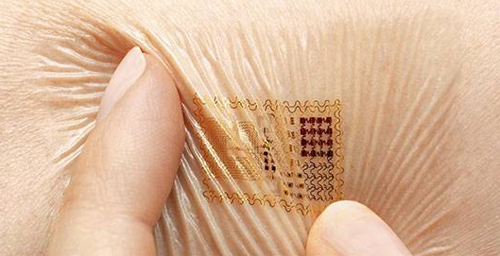The chief of Motorola says the company is interested in using electronic “tattoos” in place of passwords for security on smartphones. Dennis Woodside says the idea works in testing, though concedes it might not be in handsets for some time.
The testing used a device from Massachusetts firm MC10. Despite the “tattoo” name, it’s actually a flexible electronic circuit and wouldn’t be permanently implanted, but rather attached to the skin using a rubber stamp. Instead of typing a password, the user would simply need to make sure the phone was near to their skin.
Woodside said the company is also looking at closer integration with Proteus, a company that makes a “Digital Health Pill”. The pill is actually a small sensor about the size of a grain of sand which you can swallow at the same time as your normal medications. It carries an antenna powered by your stomach fluids, similar to the way a potato battery works.
The idea is that the digital pill not only tracks whether you’ve remembered to take your pills, but also monitors your heart rate, temperature and your levels of activity and rest. It connects wirelessly to a skin patch and in turn via Bluetooth to display the relevant information on a nearby portable device. The pill then leaves your body “in the normal process of digestion.”
While these are still very much in the ideas stage for Motorola phones, the company does seem to be making gadgetry a key part of future ranges. The forthcoming Moto X, billed as the first smartphone assembled in the United States, will have several “contextually aware” features.
Although the firm hasn’t detailed the specifics, it’s hinted that examples could include the phone detecting that it is moving at high speed — indicating driving — and rejig the user interface to make it quicker to access tools such as GPS navigation, or automatically switch to voice input mode.

